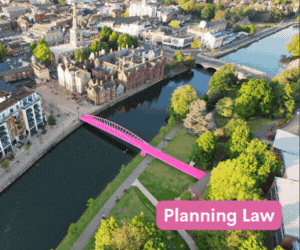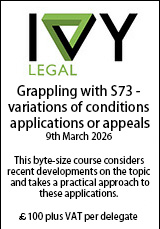Judge rejects challenge to ministerial decision to refuse planning permission for solar farm against recommendation of inspector
- Details
A solar farm developer has lost a judicial review challenge to a decision of the Secretary of State for Levelling up, Housing and Communities to overturn an inspector’s recommendation that its project should gain planning consent.
Developer Anesco argued the Secretary of State failed to apply policies correctly and was inconsistent in decision making.
But Mrs Justice Stacey ruled against the company on both grounds in the High Court.
Anesco applied to West Northamptonshire Council to build a 49.72mw solar farm on agricultural land at Gayton.
West Northamptonshire rejected this on grounds relating to landscape and visual effects and Anesco appealed.
Planning inspector Mike Robins then recommended the appeal be allowed but the decision was 'recovered' by Simon Hoare, then minister for local government under the previous government, who refused it.
Anesco’s first ground was an alleged failure to interpret properly or to apply heritage policy as the Secretary of State conflated a change to the setting of two identified heritage assets from the development, with harm to their significance, which was not open to him. This ground’s second limb was a failure to interpret properly and apply national policy.
The second ground was also in two parts.The first alleged lack of consistency between the Secretary of State’s decision in this case for that for a development at Great Wymondley, Hertfordshire, which Anesco said was a like case which should have been treated in a like manner. The second part challenged the adequacy of the reasons provided.
Stacey J heard the site was adjacent to the Grand Union Canal Conservation Area and the Grade II listed Turnover Bridge.
She said: “Questions of weight and planning judgment are exclusively for the decision maker, as are findings of fact, absent arguments of irrationality and perversity.”
On Ground 1 she said the central challenge was that the minister failed properly to interpret or apply heritage policy, in particular in the decision letter’s approach to the impact of the development on the heritage assets and their settings.
This was the main point of difference between the inspector and the Secretary of State with the latter finding harm to these as moderate, rather than the inspector's assessment of limited harm.
The other difference between the inspector and Secretary of State concerned the Turnover Bridge.
“A fair reading of the decision as a whole including the adoption of the inspector's analysis, does not demonstrate that the [Secretary of State] has equated harm to setting with harm to significance,” Stacey J said.
She said it was implicit from the decision that it was the effect of the development on the heritage asset from the impact to its setting that was being scrutinised by the Secretary of State, not the harm to the setting itself “in an abstract sense divorced from the heritage asset, nor a conflation of the two aspects”.
She said:”He understood the distinction between the two separate matters. It could perhaps have been worded more clearly in the decision, but that would be to adopt a hypercritical tone when the meaning is clear, especially when read in conjunction with the inspectors report.”
The Secretary of State also set out sufficiently why the harm to the setting impacted on the heritage asset of Grand Union Canal Conservation Area. There had not been a legal error, and so it followed that he was entitled to make his judgment that the harm to the conservation area arising from the harm to the setting was moderate, in the lower to middle end of less than substantial harm.
“Others might have reached a different decision, and indeed the inspector did and it is not to say that the inspector was wrong, but it was a decision open to the [Secretary of State] in the exercise of his judgment,” the judge said.
The second limb of ground 1 concerned whether the less than substantial harm was outweighed by the public benefits of the proposal.
Stacey J said: “The minister understood the relevant considerations – the temporal nature of the scheme, the planting and other mitigating steps proposed, but it was for him to decide their relative weight.”
On Ground 2 Stacey J said: “I can well understand how disappointing it was for the claimant to have its application refused and their confidence may have been buoyed by the Great Wymondley decision letter but there is no error of law in the defendant's decision by not addressing the different outcome in this application to the Great Wymondley decision letter. Nor do any of the other points raised by the claimant either individually or collectively give rise to an arguable claim.”
Mark Smulian
Sponsored articles
Walker Morris supports Tower Hamlets Council in first known Remediation Contribution Order application issued by local authority
Unlocking legal talent
Legal Director - Government and Public Sector
Contracts Lawyer
Lawyer (Planning and Regulatory)
Locums
Poll







































